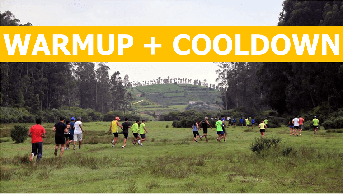RUNNING BASICS
Absolutely new to running? Use this 8-week plan to train for your very first 5K. Note that the plan has rest days too – give your body a well-deserved break on those days!
Absolutely new to running? Use this 8-week plan to train for your very first 10K. Note that the plan has rest days and cross-training days too. Beginner runners often make the mistake of running every day – don’t be that runner!
Training for a Half Marathon requires a basic level of fitness – this twelve week plan aimed at beginner runners will get you there! There are rest days and cross-training days – follow them too so that you’re well-trained, rested and stay injury-free during your training.

When training for a 10K or a longer distance, do ensure your regimen incorporates strength training - this will make you a fitter, more efficient runner.
These exercises, compiled by Runner’s World will strengthen muscles around your shoulders, core, lower back and glutes.

Your body takes a while to get "into the zone" - warm-up before and cool down right after a run to ensure you get the most out of your run, and to stay injury-free.
Runner’s World has compiled a set of stretches you can do before your training runs. The emphasis is on dynamic stretching – which scientific studies have shown to have a positive impact on your running.
The length of your cool down depends on how fast and how long you’ve run for. Walk a while to cool down and then perform these static stretches to end your workout.
Running is one of the easiest sports/fitness regimes to start. However, if you want to continue running for a long time, it is important to run well. As you get started, do structure your training regimen so you stay fit and injury-free while working towards your running goals.
Training plans: Just like any new hobby or sport, practice makes perfect. Training plans are prepared keeping in mind your prior running expertise, your target distance and your target finish time. They then list distances you should be running week-on-week in the lead-up to the event and also mark out days for recovery and other light workouts.
Strength Training: Strength training exercises work on all the muscle groups you will use during your runs. If you’re training for a 10K or Half Marathon, incorporate these into your training plans – especially on days when you aren’t running.
Warm-ups & Cool Downs: Spend a few minutes stretching before and after your run – you will feel more fluid during your run and it should help you stay injury-free.
GO HERITAGE RUNS BASICS
- Plan your travel and accommodation at least a few weeks in advance.
- Plan to arrive at the run destination at least by Saturday afternoon – so you will have time to settle in, collect your runner kit from the bib collection venue and get a good night’s rest.
- Your Run T-shirt if you opted for one
- Your Run passport and passport stamp
- Your Running bib which has your unique running number, and your emergency details printed.
- Safety Pins for you to affix your bib to your T-shirt
The Go Heritage Runs Passport is yet another way to Make Heritage Fun! Go Heritage Runners get this passport as part of their run kit to help track their GHR journey. You only need one passport – until it gets filled. Runners also get a unique stamp at each run to stick on this passport.
A runner who finishes 4 runs gets the 5th run free!
- Wear comfortable shoes and clothing.
- Use the safety pins provided to attach your running bib onto your run T-shirt. The bib helps our volunteers identify you and direct you along the route. Your medical information is also printed on the bib for reference in case of emergencies.
- Bring along a camera – our heritage run routes are quite scenic!
- Eat a light breakfast or snack in the morning.
- Reach the Run Venue at least 15 minutes prior to flagoff.
All Go Heritage Runs have aid stations every 2.5 kms – with water, electrolytes, biscuits, fruit and a medical kit. So no, you will not need to carry your own hydration.
Track our run calendar or join our mailing list – we have a fun run at a heritage destination almost every month.


